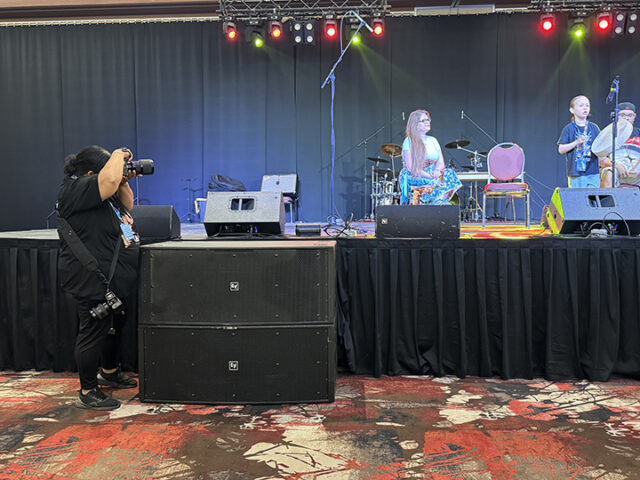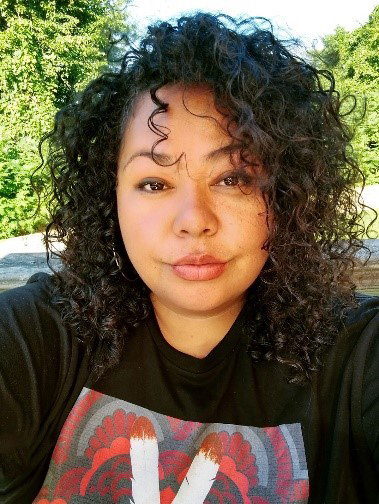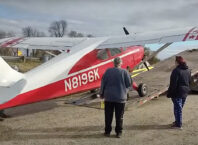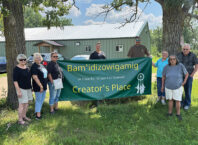
By Dan Ninham
Ne-Dah-Ness Rose Greene, an Indigenous photographer and business owner from the Leech Lake Reservation, is known for combining her artistic vision with social justice advocacy.
Greene has become one of the most in-demand photographers in Minnesota, with her work appearing in national outlets including The Washington Post, the New York Post and USA Today. Her portraits and event photography often highlight Native American and Black communities, reflecting her commitment to uplifting underrepresented voices.
A frequent presence at Black Lives Matter demonstrations, Missing and Murdered Indigenous Women (MMIW) events, and other social movements, Greene has documented pivotal moments, including the toppling of statues at the Minnesota Capitol. Her photography captures both public protests and intimate portraits, showcasing a wide range of subjects—from celebrities to grassroots organizers.
Greene’s work has also been featured in books by Native authors and used in campaigns centered on racial equity and Indigenous visibility. Her style, marked by strong composition and emotional depth, draws viewers into the humanity of her subjects. Below is my interview with her.

DN: What is your name, your Indian name and translation, tribe, where do you live and what is your work title?
NRG: My name is Nedahness Rose Greene. In Ojibwe, my name means “my daughter,” My name was given to me by my father Guy Downs Greene Jr and My mother April Gail Greene and I was also gifted a spirit name, Anangoons, meaning “Little Star” by my uncle Porky White. I am a proud member of the Leech Lake Band of Ojibwe, and I live on the Leech Lake Reservation in Boy Lake, Minnesota, where I run my full-time photography business from my home.
DN: How did you get started in photography?
NRG: I began my photography journey by what some might call a beautiful accident. Years ago, while babysitting my sister’s children in North Dakota, I used their iPad to snap photos during our walks together. I didn’t think much of it at first, I was simply capturing the beauty of the day, the light on their faces, and the joy of being present. But when I shared those images, people began asking, “Who’s the photographer?” That curiosity sparked a fire in me I didn’t know existed. With no formal training, no expensive gear, just heart and instinct, I kept documenting what I saw.
DN: Describe your photography style and how has it evolved over time?
NRG: Since starting in 2019, my photography has evolved from spontaneous snapshots to powerful, intentional storytelling. My work spans senior portraits, empowerment sessions, maternity shoots, cultural events, and documentary-style storytelling of Indigenous and Black communities. I specialize in natural light, raw emotion, and authentic moments that cannot be staged. My lens has become a vessel for truth, one that captures the complexity, resilience, and beauty of our people.
DN: What is your photography vision statement?
NRG: Through the spirit of Anangoons, I light the path of truth, healing, and beauty for Indigenous and Black communities by telling our stories through photography. I honor our traditions, uplift our voices, and create images that preserve our ways for the next seven generations. What sets my photography apart is not just the subject matter, but the way I photograph my people, with reverence, respect, and deep cultural understanding.
DN: Share how your indigenous core values are evident in your photography. What role does storytelling play in your photography?
NRG: Being Indigenous and Black, I carry a dual lens of identity that informs how I capture stories. I know firsthand how mainstream media distorts our image, telling only the pain and never the power, missing the protocols, the depth, and the love. Some stories they tell should never be told, and others they ignore completely. That’s why it’s crucial we be the ones behind the camera, telling the stories from the inside out, not the outside in.
DN: Describe a project that you are particularly proud of and why it stands out to you.
NRG: One of the most meaningful projects I’ve done is my work around Missing and Murdered Indigenous Relatives (MMIR). I organized a community event where we came together to share stories, offer healing, distribute educational materials, and even gave away MMIR merchandise. We also conducted surveys to ask our community what we need, because solutions should come from us. This issue is deeply personal. I’ve lost many family members to violence and disappearance. I am a survivor myself. This work is not just about photos, it’s about honoring lives, demanding justice, and creating space to heal.
DN: Do you mentor anyone? What advice would you give to aspiring photographers?
NRG: I also mentor young people and creatives in ways that can’t always be measured or named. I tell them you don’t need the most expensive camera to be a great storyteller. What matters is how you make people feel, how you frame the truth, and how you carry your vision. Some of the most powerful images I’ve taken came from moments of pain, joy, and connection that money can’t buy. Through photography, I’ve been published in national outlets like The Washington Post, Indian Country Today, The New York Times, People Magazine, and The MET in NY. My work is featured in bestselling books, educational materials, and visual campaigns across Turtle Island.
DN: In closing, what do you want your readers to know about you that may not have been in the media already?
NRG: I’ve collaborated with respected organizations and change makers and celebrities, all while staying grounded in who I am and where I come from. Every photo I take is infused with love for my people, my land, and my culture. I’m not just a photographer. I’m a truth-teller, a memory-keeper, and a visual warrior. My work is a prayer, a protest, and a promise to never let our stories be forgotten or misrepresented again.
See her photography online on Facebook at https://www.facebook.com/Nedahness.Greene and on Instagram at: https://www.instagram.com/nedahnessgreene.
For inquiries and bookings, contact Ne-Dah-Ness Rose Greene at 612-839-3738 or nbfa.nrg@gmail.com






